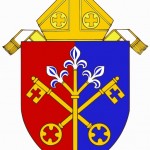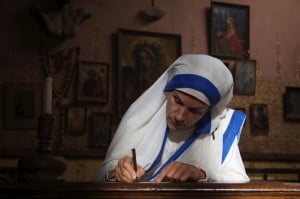 One hundred eighty-nine years ago next week—on July 15, 1832—a careless workman started a fire on the roof of one of Rome’s great papal basilicas, the Basilica of St. Paul Outside the Walls. The workman had been completing repairs on the lead tiles when a great fire erupted, causing near total destruction of the historic chapel.
One hundred eighty-nine years ago next week—on July 15, 1832—a careless workman started a fire on the roof of one of Rome’s great papal basilicas, the Basilica of St. Paul Outside the Walls. The workman had been completing repairs on the lead tiles when a great fire erupted, causing near total destruction of the historic chapel.
Repairs on the basilica took more than 30 years, with many countries contributing toward its construction. Pillars of alabaster were offered by the Viceroy of Egypt; precious malachite and lapis lazuli were sent by the Emperor of Russia for the construction of a tabernacle. The apse mosaic was the work of Venetian artists, and the Italian government sponsored the construction of the principal façade, which faced the Tiber River. And finally in 1855, Pope Piux IX and more than fifty cardinals came together to re-consecrate the beautiful basilica.
 Its history differs from the other major basilicas because for more than 700 years, the edifice was the seat of the Latin Patriarchate of Alexandria. The Eastern influence is apparent in the profuse mosaics—including scenes from the life of St. Paul, which line the nave.
Its history differs from the other major basilicas because for more than 700 years, the edifice was the seat of the Latin Patriarchate of Alexandria. The Eastern influence is apparent in the profuse mosaics—including scenes from the life of St. Paul, which line the nave.
The basilica is supported by 80 columns rising to the stuccoed ceiling. Above the columns one sees mosaic portraits of each of the popes—with room for some new faces, far into the future.  The newest mosaic, of course, is of Pope Benedict XVI.
The newest mosaic, of course, is of Pope Benedict XVI.
From the earliest days, it was believed that the church had been erected on the site of Paul’s martyrdom. This was deemed even more likely when, in December 2006, archeologists confirmed the presence of a white marble sarcophagus beneath the altar. In June 2009, Pope Benedict XVI announced that carbon 14 testing of bone fragments found in the sarcophagus did, in fact, date to the first or second century. At a service in the basilica marking the end of the Year of St. Paul, Pope Benedict stated: “This seems to confirm the unanimous and uncontested tradition that they are the mortal remains of the Apostle Paul.”
Our family visited the basilica in October 2000, and the photo above is from our visit. Imagine our surprise, upon entering the church, to find a full house—with the faithful gathered for a special event.










